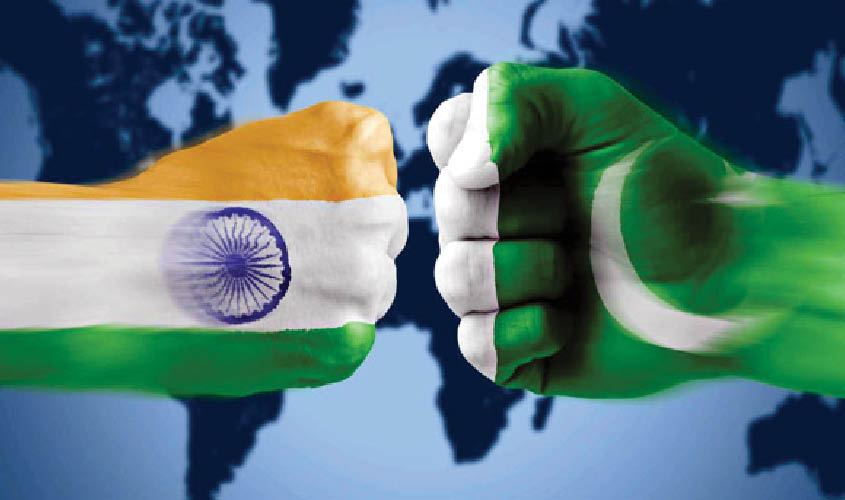At present the shadow of war is looming large and boisterous nationalists are having a field day, but incorrigible peaceniks and unrepentant Nehruvians will soon start telling us what a terrible thing it would be, especially as both are nuclear powers. The cost of war, they would lecture us, would be astoundingly high. The fact, however, is that the cost of peace has already proved to be astronomically high.
India’s 26 February aerial strike on Balakot is late by almost four decades. Since the early 1980s, Pakistan has been troubling India one way or another. It aided, abetted, and armed the Khalistan movement in Punjab. According to Ministry of Home Affairs data, as many as 13,468 people, including 1,784 security personnel, lost their lives between 1980 and 2000. Over 8,000 militants were also killed.
In Jammu & Kashmir, the Islamism-inspired and Pakistan-supported separatist movement began in the late in the 1980s, but it has killed more than 47,000 people and displaced lakhs of Kashmiri Pandits.
The point that I am trying to drive at is that had India acted against Pakistan in the early 1980s, when there was adequate evidence of its support to militancy in Punjab, a lot of lives would have been saved. It is true that there was a possibility of war in the aftermath of attacks. Three points need to be made here. First, the cost of actual war would have been much less than that of the sham peace that has prevailed in the last four decades. In all the four Indo-Pak wars—1948, 1965, 1971, and 1999—total fatalities on the Indian have been below 10,000. So, had there been a war, we would have actually saved tens of thousands of lives.
Secondly, an Indo-Pak war in the 1980s would not have had nuclear connotations, because Pakistan didn’t have an atom bomb. A war three and a half decades ago would have been much less lethal than it would now be. Not many remember or notice that for almost a quarter of a century, there was an asymmetry between India and Pakistan: the former was a nuclear power way back in 1974, whereas the latter became one only in 1998. In view of the nuclear asymmetry between the two nations, most probably Pakistan would not have gone to war with India in the first place.
Thirdly, Gen Zia-ul-Haq began Wahhabisation in the 1980s; a Frankenstein’s monster in the form of the jihadist was created; but Dr Frankenstein was still in charge 35 years ago. The folks who called the shots were professionally-trained soldiers. But now the crazy “fundos” are not only armed but also madder and entrenched in the deep state; unlike the deep-pocketed generals, they may overlook the risks any adventurism might entail.
The US State Department’s top-secret documents from 1984-85, declassified in 2016, showed that India did plan an attack on the Pakistani nuclear reactor at Kahuta, but backed off under American pressure. The inspiration came from the daring Israeli attack of 7 June 1981, against the under-construction Iraqi nuclear reactor at Osirak.
Israel even offered to lead the attack against Kahuta, as it was opposed to the “Islamic Bomb” that Pakistan was determined to develop. Prime Minister Indira Gandhi backed off after the US threatened to respond against such an action, a threat that was as much bluff as the entry of USS Enterprise into the Bay of Bengal during the birth pangs of Bangladesh in 1971.
It seems the threat was taken too seriously by India; attack at that time, as we saw above, would have been far less dangerous and costly than it would now be. Narasimha Rao similarly backed off from a nuclear test in 1994 that could have secured his re-election. A.B. Vajpayee did not repeat that mistake in 1998.
By taking on Pakistan militarily immediately after the Pulwama massacre, we have jumped several steps. Before the 26 February strike, we should have in past years exhausted other options. New Delhi did not do anything substantive—that is substantive non-militarily—against Islamabad before that day. It didn’t even end diplomatic ties with the country whose main export is jihad. Foreign policy and decision makers didn’t even bother to withdraw the MFN (most favoured nation) status to Pakistan. Trade between the two countries continued. It was business as usual till the Pulwama outrage.
India has not even used its power and influence that it enjoys in the world of cricket. It is a well-known fact that the Board of Control for Cricket in India (BCCI) is the world’s richest cricket board. We have not been able to leverage this strength to banish Pakistan from international cricket. Why not is a question for BCCI and its political backers to answer.
Further, we have not been able to coax, cajole or coerce multinational corporations to quit Pakistan.
A less expensive, painful, and dangerous option than war would have been boots on the ground in Afghanistan, something that Washington has been requesting New Delhi for quite some time. It would not only ease pressure on the Americans but also help us sandwich Pakistan from two sides.
It is indisputable, though, that the 26 February attack has rattled Pakistan, for it is the first time that a cost has been imposed to its destroy India project.
Ravi Shanker Kapoor is Editor, Power Corridors.

